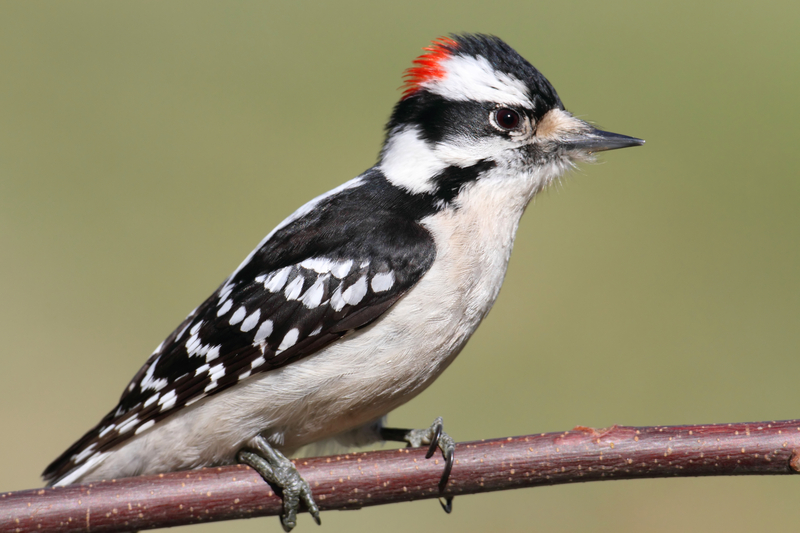My youngest daughter, Macy, woke up this morning complaining of loud “tapping” noises outside her window. Normally, I would have flipped out, concerned that some “peeping tom” or would-be intruder was lurking outside her bedroom. But, in this case, I knew the culprit. As I proceeded to explain to her, a feathered friend, one of the downy woodpeckers that often feeds at our bird feeders, had taken up occupancy within her wall. Now, while I’m a huge fan of our avian friends, and think these little woodpeckers are adorable, I’d rather not have them inside my house. I’d much rather enjoy them from the view of my window, watching as they visit our suet feeder, or, if they are in my house, I prefer the inanimate ones, like this carving by my father, that sits quietly perched on a lamp or on my mantle. (sorry – shameless plug for my father, a master bird carver, who I believe is one of the best wildlife carvers around. You can see his work here at Songbird Collectibles.).
adorable, I’d rather not have them inside my house. I’d much rather enjoy them from the view of my window, watching as they visit our suet feeder, or, if they are in my house, I prefer the inanimate ones, like this carving by my father, that sits quietly perched on a lamp or on my mantle. (sorry – shameless plug for my father, a master bird carver, who I believe is one of the best wildlife carvers around. You can see his work here at Songbird Collectibles.).
Curious if others have had similar problems with woodpeckers attacking their home. Each time he (males have a small red patch on their head) started a new hole, we’d plug it with steel wool or paper towels. Undeterred, he’d simply move over 2 inches and begin another. This has gone on now for several months. And after numerous attempted holes, this little rascal finally succeeded in taking up residence in the soffit. Appears, we’re not alone in this dilemma. According to the Audubon Society,
Although woodpeckers are beneficial members of the wildlife community, they can at times come into conflict with people. To a woodpecker, a wooden house is simply a large, oddly shaped tree, and the birds frequently choose houses as drilling or drumming sites.
Here’s some additional tips:
COVER THE AREA BEING DAMAGED
Woodpeckers show strong preferences for particular sites, and are difficult to dissuade from drilling and drumming on favorite spots. However, there are some things homeowners can do to protect their houses. A large sheet of plastic, such as a painters’ drop cloth or a heavy duty garbage bag, can be tacked over the wood or metal on a house. Attach the plastic sheet at the top and leave the bottom free to bunch and blow in the wind. The birds will then not be able to get a good footing on the plastic, and the movement of the plastic will help scare the birds away.
In other areas of the house, such as corners or under eaves, bird netting (i.e., fruit tree netting, available at garden supply centers) can be stretched (keep it at least 6 inches from the surface) so that the woodpecker cannot reach the wood or metal.
SCARE TACTICS
Try hanging several, 6 foot long mylar streamers (found in party supply stores) ten inches apart over the damaged area. In hard to reach or inaccessible areas, extend helium-filled mylar balloons (with very long strings) directly in front of the area. The movement of these materials when the wind blows will help to deter the birds. The homeowner can supplement these scare tactics by squirting a hose near the bird before it gets settled in to work in the mornings.
DO NOT
Waste money on plastic owls or rubber snakes. These items are of no use in deterring woodpeckers. Mothballs are also ineffective since the birds do not have a well developed sense of smell. There are no repellents that will effectively and safely deter woodpeckers.
CONCLUSION
Conflicts between woodpeckers and people can generally be resolved if homeowners make an effort to discourage the birds. Plastic sheeting and balloons and streamers are effective in deterring most woodpeckers. Leaving dead trees and snags around the yard will also help provide natural feeding, nesting, and drumming sites for the birds.
I hope to soon relocate this fella to a more natural abode and reclaim our home.

